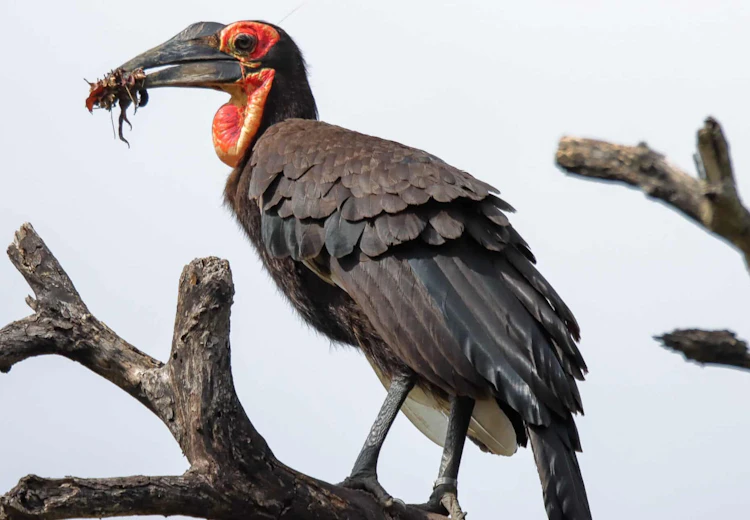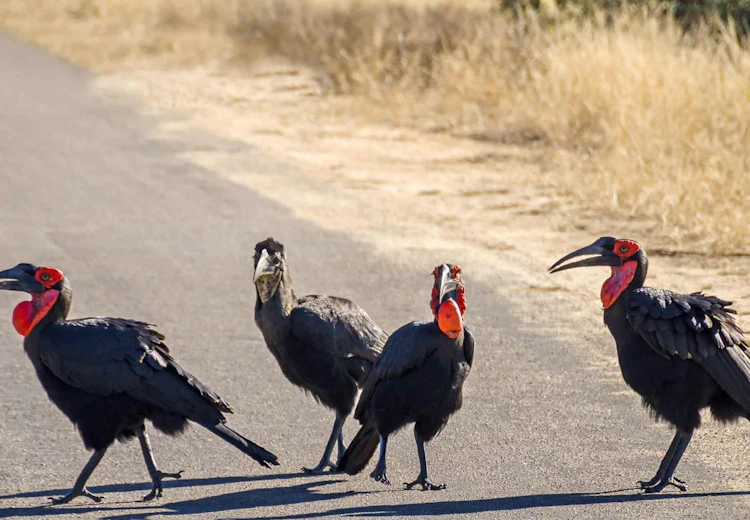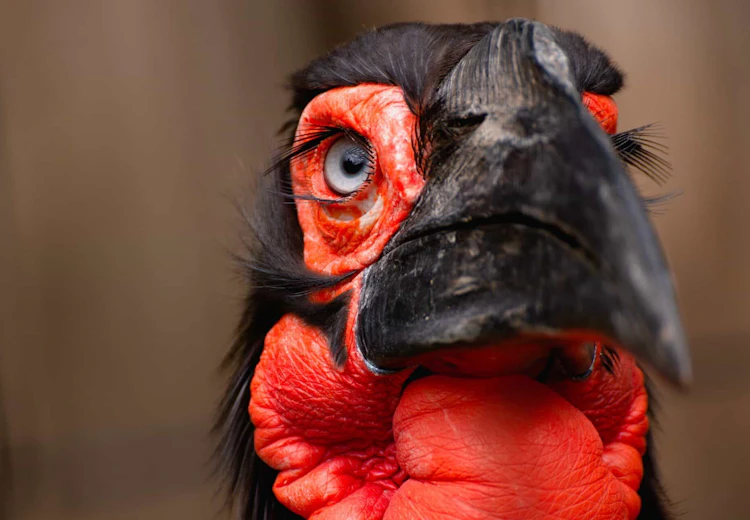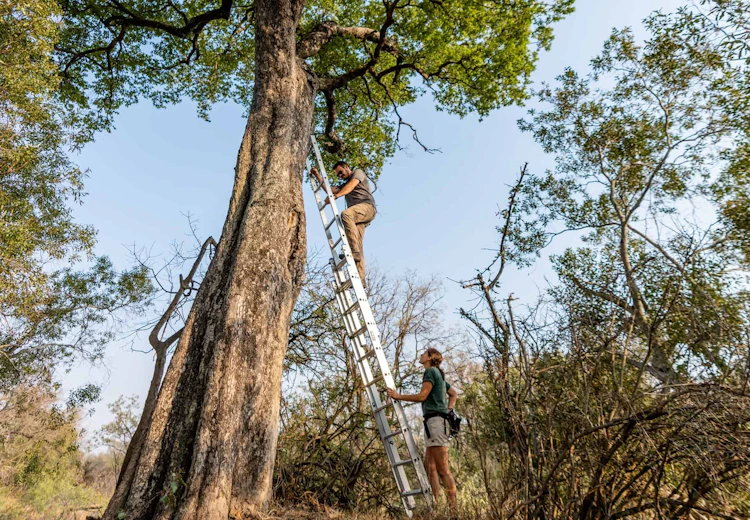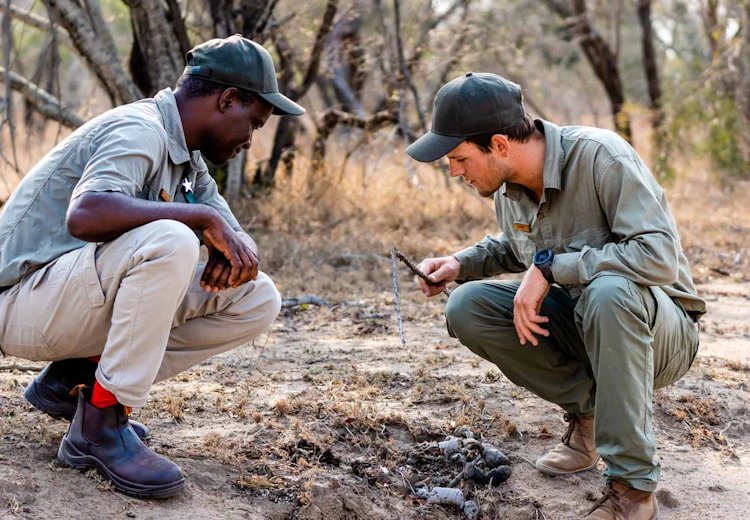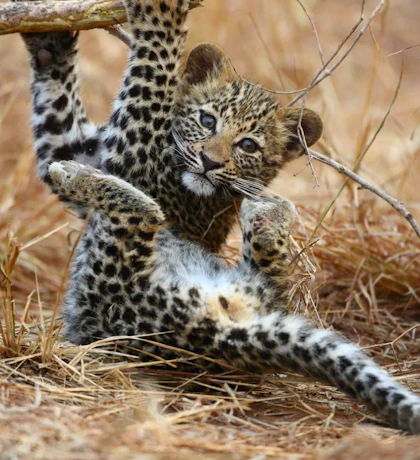Not ready to book just yet? Submit an enquiry and our team will be in touch within 24 hours.
Saving the iconic southern ground hornbill
Royal MalewaneMany of our guests at Royal Malewane – especially if they have not been on safari before – tend to be more interested in mammals than birds when they arrive. However, the variety, colours and fascinating behaviour of the hundreds of species of birds in the Greater Kruger can soon turn anyone into a dedicated birder.
Meet the thunder bird
Few birds are as impressive – or as interesting – as the southern ground hornbill. Whether you see them striding through the grass, or perched on the branches of a dead tree, they are unmistakable with their coloured faces, heavy wattles and wicked-looking beaks. Their all-black plumage makes them look like mourners at a funeral – and the flash of white when they spread their wings will surprise you!
Southern ground hornbills have a unique lifestyle –they live in groups that include an alpha male and female, along with other related and unrelated members. The offspring take many years to mature, and will remain with their native group until this time. Your Guide and Tracker can help you tell them all apart.
Teamwork comes naturally
They are known as ‘cooperative breeders’ with group members all helping to forage for food for younger chicks, warn of danger, and defend the group’s territory. The name ‘thunder bird’ derives from the booming calls that these birds make as a way of advertising their territory, and possibly also to help strengthen bonds within the group.
Eggs are laid in hollows in large trees, and all members of the group participate in taking care of the voracious youngsters. When it comes to feeding, the diet of the ground hornbill is not for the faint-hearted. We’re talking large insects, snakes and even tortoises, which the ground hornbills can break open using their heavy beaks.
Thunder birds in danger
Because ground hornbills breed extremely slowly, they are particularly vulnerable to threats including habitat loss (the grasslands they feed in, and forests with large trees for nesting). They are also sometimes killed for traditional medicine (they are believed to have magical rain-bringing powers), and poisoned either accidentally or deliberately. They are often persecuted for their habit of breaking windows – they seem to see their reflections as rivals, which they then attack.
These factors mean that – outside of protected areas – ground hornbills are sadly now a very rare sight. There’s an urgent need to conserve this iconic species, and this begins with research.
Conservation in action
That’s why Royale Malewane and The Royal Portfolio Foundation are proud to support The Associate Private Nature Reserve (APNR) Ground Hornbill Project, which has been active in the Greater Kruger for over 20 years. The APNR Ground Hornbill Project is led by the renowned FitzPatrick Institute of African Ornithology and focuses on studying these birds in their natural environment, with a particular emphasis on understanding their reproductive behaviour. Success has been achieved with installing artificial nests, which makes it more likely that adult birds will breed successfully.
The APNR Ground Hornbill Project collects sightings reports from Guides and visitors, and uses this information to compile a database of records that illustrate changes in distribution and numbers over time.
Get involved
This is in no small part due to the work of the researchers – and to the generous support of guests of The Royal Portfolio through their donations to the Foundation. As a guest at Royal Malewane, you can join the expert ornithologists in the field as they monitor active ground hornbill nest sites, and listen to an informative talk about these intriguing birds in the comfort of the lodge.
Follow this link to learn more about this vital conservation initiative.

